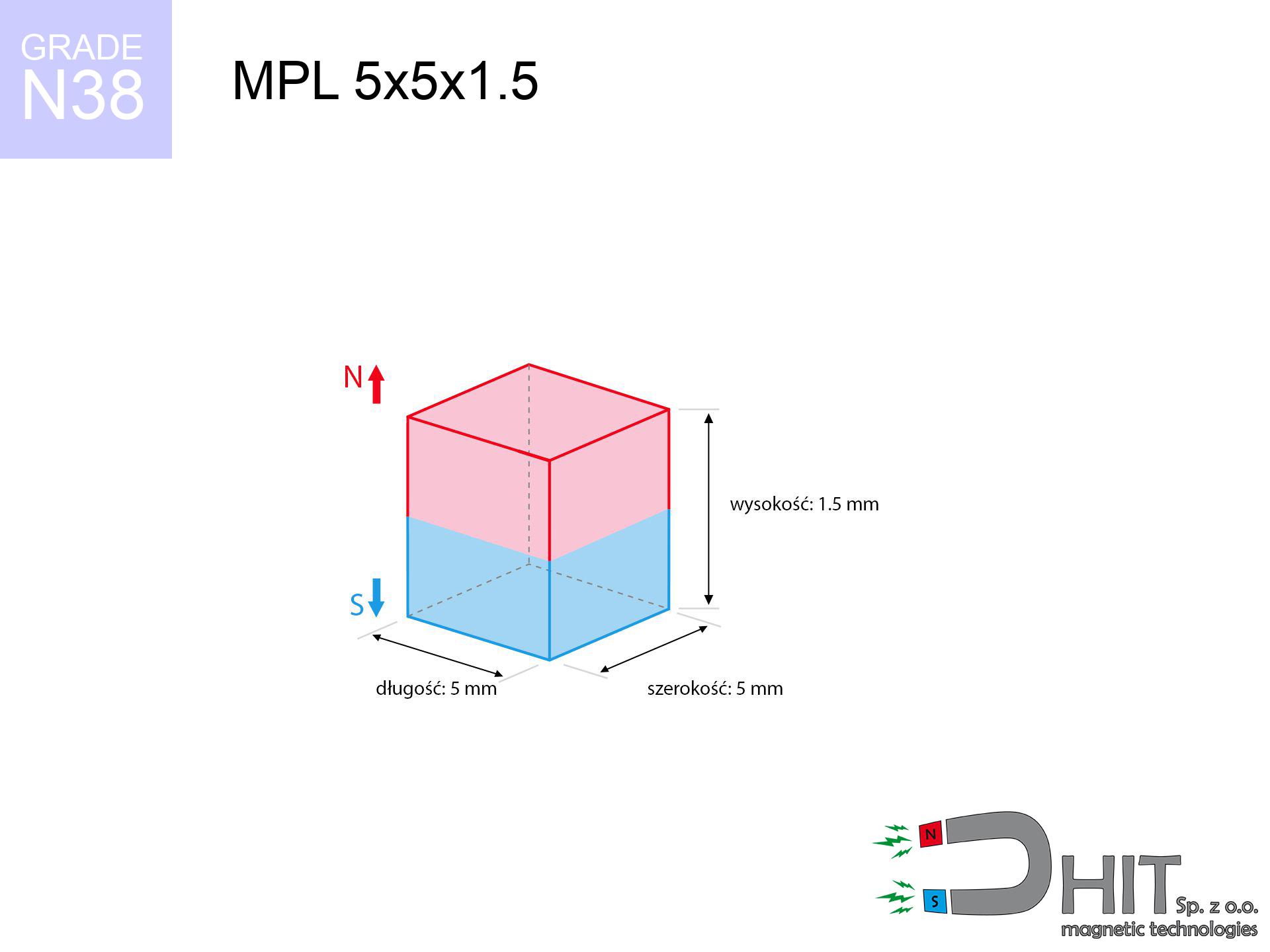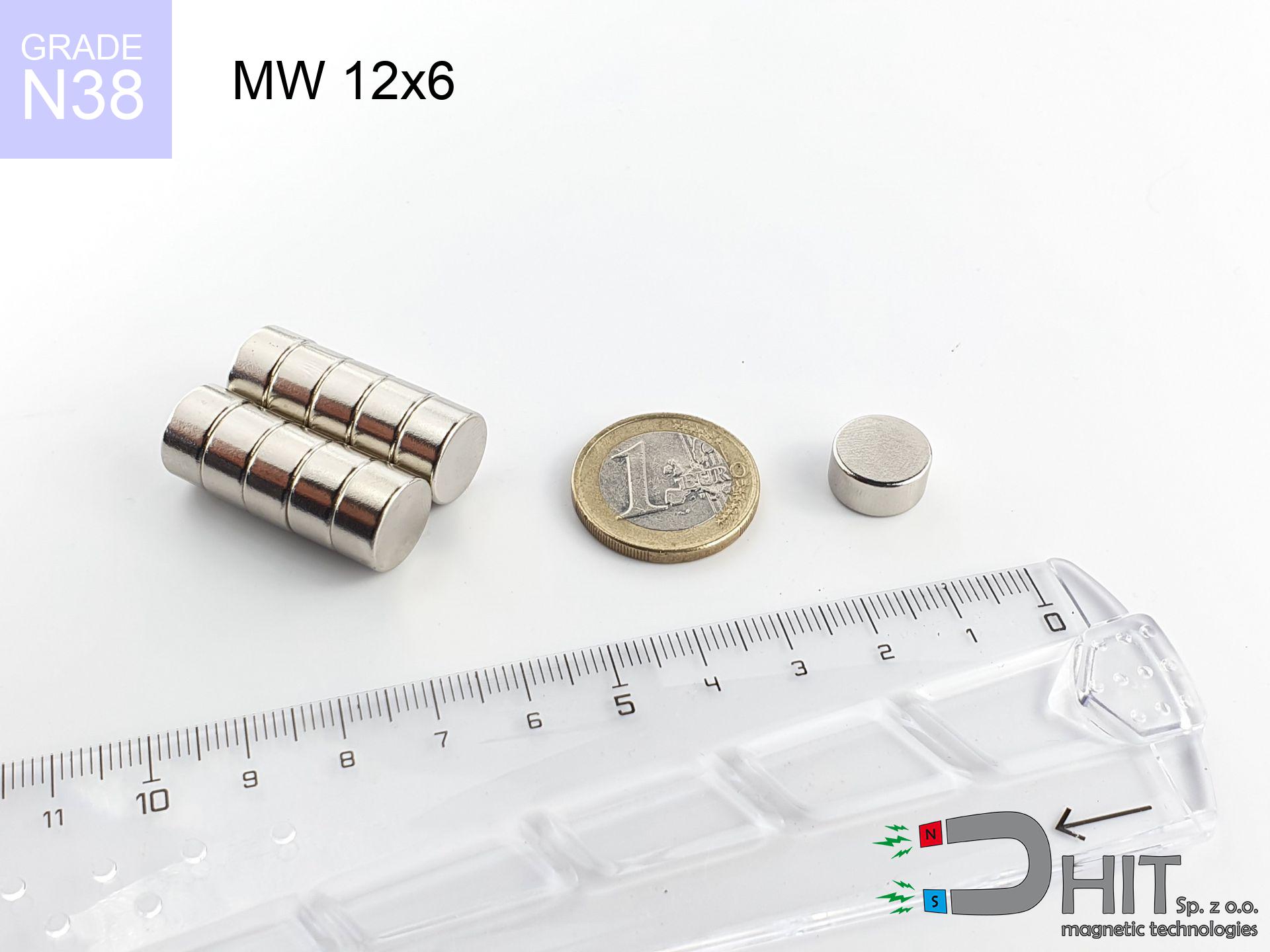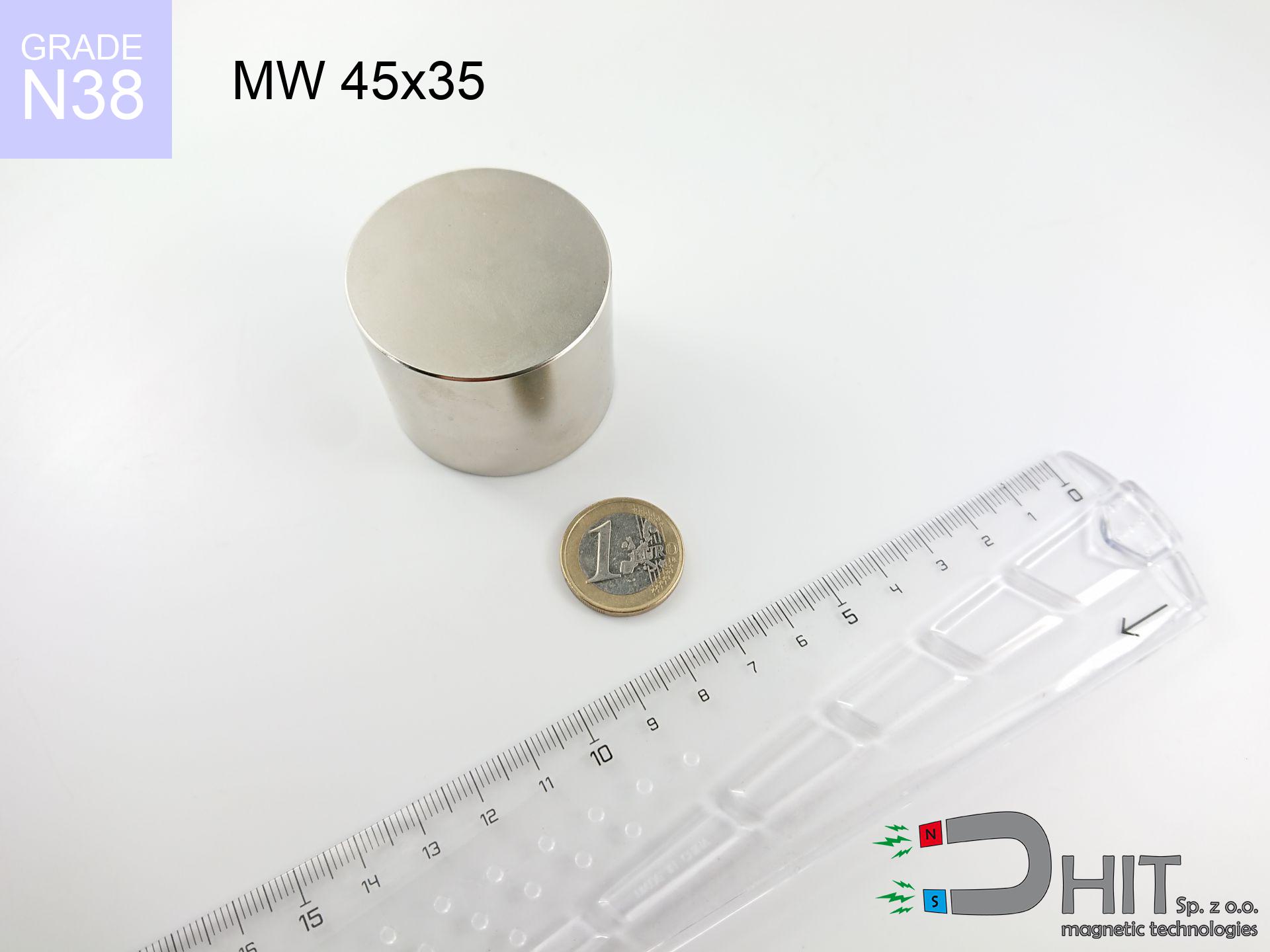MPL 5x5x1.5 / N38 - lamellar magnet
lamellar magnet
Catalog no 020172
GTIN/EAN: 5906301811787
length
5 mm [±0,1 mm]
Width
5 mm [±0,1 mm]
Height
1.5 mm [±0,1 mm]
Weight
0.28 g
Magnetization Direction
↑ axial
Load capacity
0.58 kg / 5.68 N
Magnetic Induction
293.49 mT / 2935 Gs
Coating
[NiCuNi] Nickel
0.1845 ZŁ with VAT / pcs + price for transport
0.1500 ZŁ net + 23% VAT / pcs
bulk discounts:
Need more?
Call us
+48 888 99 98 98
alternatively drop us a message via
request form
the contact section.
Specifications and shape of magnetic components can be tested with our
our magnetic calculator.
Orders placed before 14:00 will be shipped the same business day.
Technical - MPL 5x5x1.5 / N38 - lamellar magnet
Specification / characteristics - MPL 5x5x1.5 / N38 - lamellar magnet
| properties | values |
|---|---|
| Cat. no. | 020172 |
| GTIN/EAN | 5906301811787 |
| Production/Distribution | Dhit sp. z o.o. |
| Country of origin | Poland / China / Germany |
| Customs code | 85059029 |
| length | 5 mm [±0,1 mm] |
| Width | 5 mm [±0,1 mm] |
| Height | 1.5 mm [±0,1 mm] |
| Weight | 0.28 g |
| Magnetization Direction | ↑ axial |
| Load capacity ~ ? | 0.58 kg / 5.68 N |
| Magnetic Induction ~ ? | 293.49 mT / 2935 Gs |
| Coating | [NiCuNi] Nickel |
| Manufacturing Tolerance | ±0.1 mm |
Magnetic properties of material N38
| properties | values | units |
|---|---|---|
| remenance Br [min. - max.] ? | 12.2-12.6 | kGs |
| remenance Br [min. - max.] ? | 1220-1260 | mT |
| coercivity bHc ? | 10.8-11.5 | kOe |
| coercivity bHc ? | 860-915 | kA/m |
| actual internal force iHc | ≥ 12 | kOe |
| actual internal force iHc | ≥ 955 | kA/m |
| energy density [min. - max.] ? | 36-38 | BH max MGOe |
| energy density [min. - max.] ? | 287-303 | BH max KJ/m |
| max. temperature ? | ≤ 80 | °C |
Physical properties of sintered neodymium magnets Nd2Fe14B at 20°C
| properties | values | units |
|---|---|---|
| Vickers hardness | ≥550 | Hv |
| Density | ≥7.4 | g/cm3 |
| Curie Temperature TC | 312 - 380 | °C |
| Curie Temperature TF | 593 - 716 | °F |
| Specific resistance | 150 | μΩ⋅cm |
| Bending strength | 250 | MPa |
| Compressive strength | 1000~1100 | MPa |
| Thermal expansion parallel (∥) to orientation (M) | (3-4) x 10-6 | °C-1 |
| Thermal expansion perpendicular (⊥) to orientation (M) | -(1-3) x 10-6 | °C-1 |
| Young's modulus | 1.7 x 104 | kg/mm² |
Physical modeling of the magnet - data
Presented information represent the outcome of a physical calculation. Results are based on algorithms for the material Nd2Fe14B. Real-world conditions may differ from theoretical values. Treat these data as a preliminary roadmap for designers.
Table 1: Static force (pull vs gap) - power drop
MPL 5x5x1.5 / N38
| Distance (mm) | Induction (Gauss) / mT | Pull Force (kg) | Risk Status |
|---|---|---|---|
| 0 mm |
2932 Gs
293.2 mT
|
0.58 kg / 580.0 g
5.7 N
|
safe |
| 1 mm |
2036 Gs
203.6 mT
|
0.28 kg / 279.6 g
2.7 N
|
safe |
| 2 mm |
1228 Gs
122.8 mT
|
0.10 kg / 101.7 g
1.0 N
|
safe |
| 3 mm |
727 Gs
72.7 mT
|
0.04 kg / 35.7 g
0.3 N
|
safe |
| 5 mm |
285 Gs
28.5 mT
|
0.01 kg / 5.5 g
0.1 N
|
safe |
| 10 mm |
54 Gs
5.4 mT
|
0.00 kg / 0.2 g
0.0 N
|
safe |
| 15 mm |
18 Gs
1.8 mT
|
0.00 kg / 0.0 g
0.0 N
|
safe |
| 20 mm |
8 Gs
0.8 mT
|
0.00 kg / 0.0 g
0.0 N
|
safe |
| 30 mm |
3 Gs
0.3 mT
|
0.00 kg / 0.0 g
0.0 N
|
safe |
| 50 mm |
1 Gs
0.1 mT
|
0.00 kg / 0.0 g
0.0 N
|
safe |
Table 2: Vertical hold (wall)
MPL 5x5x1.5 / N38
| Distance (mm) | Friction coefficient | Pull Force (kg) |
|---|---|---|
| 0 mm | Stal (~0.2) |
0.12 kg / 116.0 g
1.1 N
|
| 1 mm | Stal (~0.2) |
0.06 kg / 56.0 g
0.5 N
|
| 2 mm | Stal (~0.2) |
0.02 kg / 20.0 g
0.2 N
|
| 3 mm | Stal (~0.2) |
0.01 kg / 8.0 g
0.1 N
|
| 5 mm | Stal (~0.2) |
0.00 kg / 2.0 g
0.0 N
|
| 10 mm | Stal (~0.2) |
0.00 kg / 0.0 g
0.0 N
|
| 15 mm | Stal (~0.2) |
0.00 kg / 0.0 g
0.0 N
|
| 20 mm | Stal (~0.2) |
0.00 kg / 0.0 g
0.0 N
|
| 30 mm | Stal (~0.2) |
0.00 kg / 0.0 g
0.0 N
|
| 50 mm | Stal (~0.2) |
0.00 kg / 0.0 g
0.0 N
|
Table 3: Vertical assembly (sliding) - vertical pull
MPL 5x5x1.5 / N38
| Surface type | Friction coefficient / % Mocy | Max load (kg) |
|---|---|---|
| Raw steel |
µ = 0.3
30% Nominalnej Siły
|
0.17 kg / 174.0 g
1.7 N
|
| Painted steel (standard) |
µ = 0.2
20% Nominalnej Siły
|
0.12 kg / 116.0 g
1.1 N
|
| Oily/slippery steel |
µ = 0.1
10% Nominalnej Siły
|
0.06 kg / 58.0 g
0.6 N
|
| Magnet with anti-slip rubber |
µ = 0.5
50% Nominalnej Siły
|
0.29 kg / 290.0 g
2.8 N
|
Table 4: Material efficiency (substrate influence) - power losses
MPL 5x5x1.5 / N38
| Steel thickness (mm) | % power | Real pull force (kg) |
|---|---|---|
| 0.5 mm |
|
0.06 kg / 58.0 g
0.6 N
|
| 1 mm |
|
0.15 kg / 145.0 g
1.4 N
|
| 2 mm |
|
0.29 kg / 290.0 g
2.8 N
|
| 5 mm |
|
0.58 kg / 580.0 g
5.7 N
|
| 10 mm |
|
0.58 kg / 580.0 g
5.7 N
|
Table 5: Thermal resistance (stability) - thermal limit
MPL 5x5x1.5 / N38
| Ambient temp. (°C) | Power loss | Remaining pull | Status |
|---|---|---|---|
| 20 °C | 0.0% |
0.58 kg / 580.0 g
5.7 N
|
OK |
| 40 °C | -2.2% |
0.57 kg / 567.2 g
5.6 N
|
OK |
| 60 °C | -4.4% |
0.55 kg / 554.5 g
5.4 N
|
|
| 80 °C | -6.6% |
0.54 kg / 541.7 g
5.3 N
|
|
| 100 °C | -28.8% |
0.41 kg / 413.0 g
4.1 N
|
Table 6: Two magnets (attraction) - forces in the system
MPL 5x5x1.5 / N38
| Gap (mm) | Attraction (kg) (N-S) | Repulsion (kg) (N-N) |
|---|---|---|
| 0 mm |
1.33 kg / 1325 g
13.0 N
4 518 Gs
|
N/A |
| 1 mm |
0.97 kg / 974 g
9.6 N
5 027 Gs
|
0.88 kg / 876 g
8.6 N
~0 Gs
|
| 2 mm |
0.64 kg / 639 g
6.3 N
4 071 Gs
|
0.57 kg / 575 g
5.6 N
~0 Gs
|
| 3 mm |
0.39 kg / 392 g
3.8 N
3 188 Gs
|
0.35 kg / 352 g
3.5 N
~0 Gs
|
| 5 mm |
0.14 kg / 137 g
1.3 N
1 886 Gs
|
0.12 kg / 123 g
1.2 N
~0 Gs
|
| 10 mm |
0.01 kg / 12 g
0.1 N
569 Gs
|
0.01 kg / 11 g
0.1 N
~0 Gs
|
| 20 mm |
0.00 kg / 0 g
0.0 N
108 Gs
|
0.00 kg / 0 g
0.0 N
~0 Gs
|
| 50 mm |
0.00 kg / 0 g
0.0 N
9 Gs
|
0.00 kg / 0 g
0.0 N
~0 Gs
|
Table 7: Safety (HSE) (electronics) - warnings
MPL 5x5x1.5 / N38
| Object / Device | Limit (Gauss) / mT | Safe distance |
|---|---|---|
| Pacemaker | 5 Gs (0.5 mT) | 2.5 cm |
| Hearing aid | 10 Gs (1.0 mT) | 2.0 cm |
| Timepiece | 20 Gs (2.0 mT) | 1.5 cm |
| Phone / Smartphone | 40 Gs (4.0 mT) | 1.5 cm |
| Remote | 50 Gs (5.0 mT) | 1.5 cm |
| Payment card | 400 Gs (40.0 mT) | 0.5 cm |
| HDD hard drive | 600 Gs (60.0 mT) | 0.5 cm |
Table 8: Dynamics (kinetic energy) - collision effects
MPL 5x5x1.5 / N38
| Start from (mm) | Speed (km/h) | Energy (J) | Predicted outcome |
|---|---|---|---|
| 10 mm |
45.91 km/h
(12.75 m/s)
|
0.02 J | |
| 30 mm |
79.50 km/h
(22.08 m/s)
|
0.07 J | |
| 50 mm |
102.64 km/h
(28.51 m/s)
|
0.11 J | |
| 100 mm |
145.15 km/h
(40.32 m/s)
|
0.23 J |
Table 9: Corrosion resistance
MPL 5x5x1.5 / N38
| Technical parameter | Value / Description |
|---|---|
| Coating type | [NiCuNi] Nickel |
| Layer structure | Nickel - Copper - Nickel |
| Layer thickness | 10-20 µm |
| Salt spray test (SST) ? | 24 h |
| Recommended environment | Indoors only (dry) |
Table 10: Electrical data (Flux)
MPL 5x5x1.5 / N38
| Parameter | Value | SI Unit / Description |
|---|---|---|
| Magnetic Flux | 799 Mx | 8.0 µWb |
| Pc Coefficient | 0.36 | Low (Flat) |
Table 11: Underwater work (magnet fishing)
MPL 5x5x1.5 / N38
| Environment | Effective steel pull | Effect |
|---|---|---|
| Air (land) | 0.58 kg | Standard |
| Water (riverbed) |
0.66 kg
(+0.08 kg Buoyancy gain)
|
+14.5% |
1. Wall mount (shear)
*Warning: On a vertical surface, the magnet retains merely ~20% of its max power.
2. Plate thickness effect
*Thin steel (e.g. 0.5mm PC case) drastically weakens the holding force.
3. Temperature resistance
*For standard magnets, the max working temp is 80°C.
4. Demagnetization curve and operating point (B-H)
chart generated for the permeance coefficient Pc (Permeance Coefficient) = 0.36
This simulation demonstrates the magnetic stability of the selected magnet under specific geometric conditions. The solid red line represents the demagnetization curve (material potential), while the dashed blue line is the load line based on the magnet's geometry. The Pc (Permeance Coefficient), also known as the load line slope, is a dimensionless value that describes the relationship between the magnet's shape and its magnetic stability. The intersection of these two lines (the black dot) is the operating point — it determines the actual magnetic flux density generated by the magnet in this specific configuration. A higher Pc value means the magnet is more 'slender' (tall relative to its area), resulting in a higher operating point and better resistance to irreversible demagnetization caused by external fields or temperature. A value of 0.42 is relatively low (typical for flat magnets), meaning the operating point is closer to the 'knee' of the curve — caution is advised when operating at temperatures near the maximum limit to avoid strength loss.
Chemical composition
| iron (Fe) | 64% – 68% |
| neodymium (Nd) | 29% – 32% |
| boron (B) | 1.1% – 1.2% |
| dysprosium (Dy) | 0.5% – 2.0% |
| coating (Ni-Cu-Ni) | < 0.05% |
Environmental data
| recyclability (EoL) | 100% |
| recycled raw materials | ~10% (pre-cons) |
| carbon footprint | low / zredukowany |
| waste code (EWC) | 16 02 16 |
Other offers
Pros and cons of Nd2Fe14B magnets.
Pros
- They retain attractive force for around ten years – the drop is just ~1% (according to analyses),
- They have excellent resistance to magnetism drop as a result of external fields,
- The use of an shiny layer of noble metals (nickel, gold, silver) causes the element to be more visually attractive,
- Magnetic induction on the working part of the magnet turns out to be maximum,
- Made from properly selected components, these magnets show impressive resistance to high heat, enabling them to function (depending on their shape) at temperatures up to 230°C and above...
- Possibility of precise creating and adjusting to defined requirements,
- Huge importance in modern industrial fields – they are used in HDD drives, electromotive mechanisms, advanced medical instruments, also other advanced devices.
- Compactness – despite small sizes they provide effective action, making them ideal for precision applications
Disadvantages
- To avoid cracks under impact, we suggest using special steel housings. Such a solution protects the magnet and simultaneously improves its durability.
- We warn that neodymium magnets can lose their strength at high temperatures. To prevent this, we advise our specialized [AH] magnets, which work effectively even at 230°C.
- Due to the susceptibility of magnets to corrosion in a humid environment, we suggest using waterproof magnets made of rubber, plastic or other material resistant to moisture, in case of application outdoors
- Limited possibility of creating threads in the magnet and complicated forms - preferred is a housing - magnet mounting.
- Possible danger to health – tiny shards of magnets can be dangerous, when accidentally swallowed, which is particularly important in the context of child safety. It is also worth noting that tiny parts of these products can complicate diagnosis medical in case of swallowing.
- Due to complex production process, their price is higher than average,
Holding force characteristics
Highest magnetic holding force – what affects it?
- with the contact of a sheet made of special test steel, guaranteeing maximum field concentration
- whose transverse dimension reaches at least 10 mm
- with an ground touching surface
- without the slightest air gap between the magnet and steel
- for force applied at a right angle (in the magnet axis)
- at temperature approx. 20 degrees Celsius
Determinants of practical lifting force of a magnet
- Distance – existence of foreign body (paint, dirt, gap) acts as an insulator, which lowers power rapidly (even by 50% at 0.5 mm).
- Load vector – highest force is reached only during pulling at a 90° angle. The resistance to sliding of the magnet along the plate is typically many times lower (approx. 1/5 of the lifting capacity).
- Wall thickness – thin material does not allow full use of the magnet. Magnetic flux passes through the material instead of converting into lifting capacity.
- Material composition – different alloys reacts the same. Alloy additives weaken the interaction with the magnet.
- Base smoothness – the smoother and more polished the plate, the larger the contact zone and stronger the hold. Roughness creates an air distance.
- Thermal conditions – neodymium magnets have a negative temperature coefficient. When it is hot they are weaker, and in frost they can be stronger (up to a certain limit).
Lifting capacity was determined with the use of a smooth steel plate of optimal thickness (min. 20 mm), under perpendicular detachment force, whereas under parallel forces the lifting capacity is smaller. Moreover, even a small distance between the magnet and the plate reduces the holding force.
Safety rules for work with neodymium magnets
Keep away from children
Only for adults. Small elements can be swallowed, causing serious injuries. Store out of reach of kids and pets.
Crushing risk
Danger of trauma: The attraction force is so immense that it can result in hematomas, pinching, and even bone fractures. Protective gloves are recommended.
Avoid contact if allergic
Warning for allergy sufferers: The nickel-copper-nickel coating consists of nickel. If an allergic reaction appears, immediately stop working with magnets and wear gloves.
Precision electronics
GPS units and mobile phones are highly sensitive to magnetic fields. Close proximity with a strong magnet can decalibrate the sensors in your phone.
Danger to pacemakers
Warning for patients: Strong magnetic fields affect electronics. Keep minimum 30 cm distance or request help to work with the magnets.
Material brittleness
Protect your eyes. Magnets can explode upon violent connection, ejecting shards into the air. Wear goggles.
Combustion hazard
Mechanical processing of neodymium magnets poses a fire hazard. Neodymium dust reacts violently with oxygen and is difficult to extinguish.
Safe operation
Use magnets with awareness. Their powerful strength can surprise even professionals. Plan your moves and do not underestimate their power.
Data carriers
Data protection: Strong magnets can ruin payment cards and delicate electronics (pacemakers, medical aids, mechanical watches).
Permanent damage
Watch the temperature. Exposing the magnet above 80 degrees Celsius will destroy its magnetic structure and pulling force.




![UMGZ 16x13x5 [M4] GZ / N38 - magnetic holder external thread UMGZ 16x13x5 [M4] GZ / N38 - magnetic holder external thread](https://cdn3.dhit.pl/graphics/products/um-16x13x5-m4-gz-cor.jpg)
![BM 650x180x70 [4x M8] - magnetic beam BM 650x180x70 [4x M8] - magnetic beam](https://cdn3.dhit.pl/graphics/products/bm-650x180x70-4x-m8-laj.jpg)



